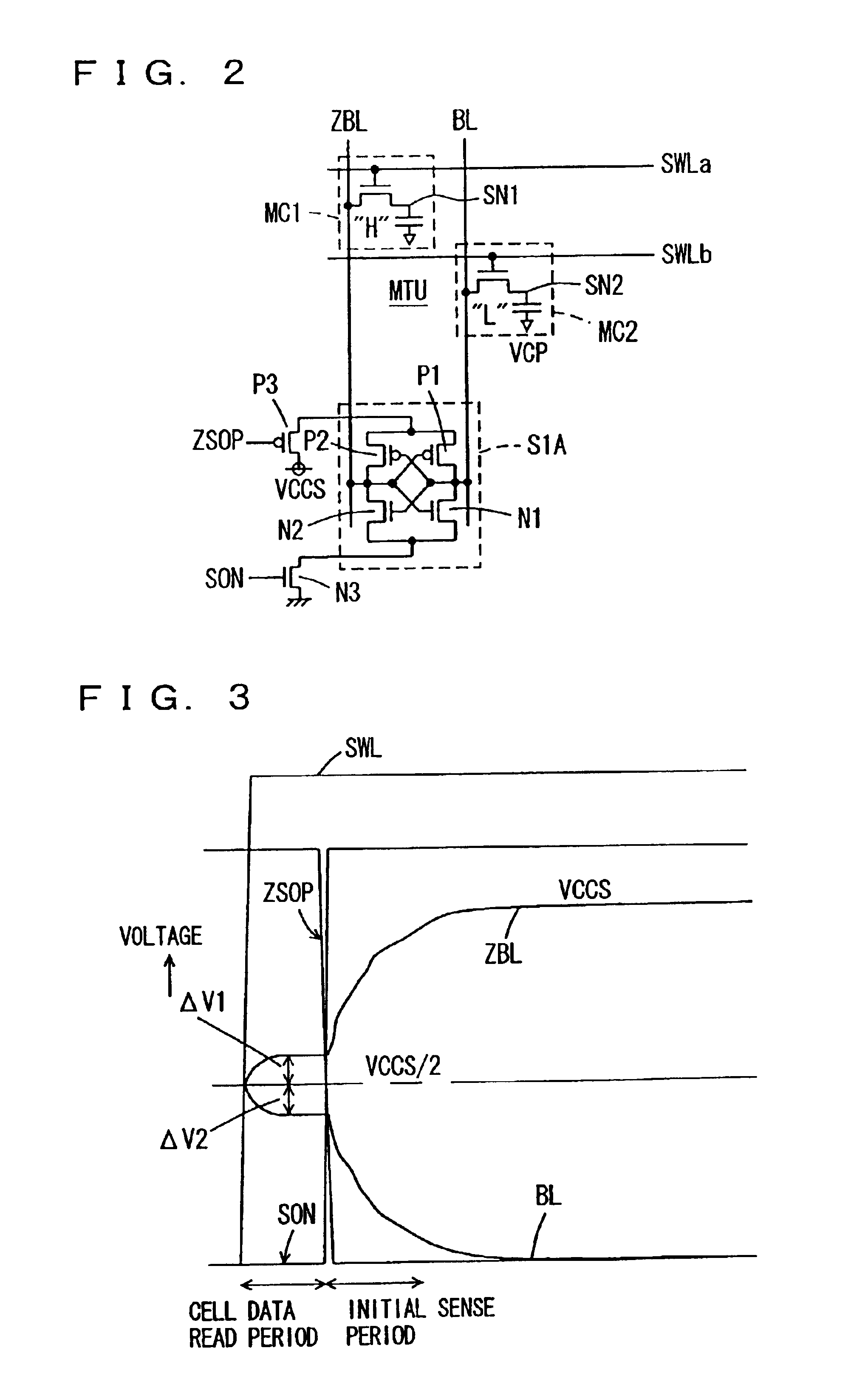Refresh-free dynamic semiconductor memory device
a dynamic semiconductor and memory device technology, applied in static storage, information storage, digital storage, etc., can solve the problems of increased junction leakage current, increased leakage current through capacitor insulating film, and rise in read error for h data, etc., to achieve low power consumption
- Summary
- Abstract
- Description
- Claims
- Application Information
AI Technical Summary
Benefits of technology
Problems solved by technology
Method used
Image
Examples
first embodiment
[0160]FIG. 1 is a diagram schematically showing an array section of a semiconductor memory device according to a first embodiment of the present invention. In FIG. 1, memory cells MC are arranged such that memory cells adjacent in the column direction share a bit line contact BCT. One layout unit LU is constituted of two memory cells MC sharing the bit line contact BCT. The layout units LU are placed such that in the column direction arrangement, layout units are laid out every second column, while in the row direction arrangement, layout units are laid out every third row. With respect to bit line contacts BCT, accordingly, the bit line contacts BCT are laid out every fifth row in alignment along the column direction, while the bit line contacts BCT are laid out every second column in alignment along the row direction. In the row direction, the layout units LU are arranged being sifted by one column. A length of a projection of a minimum pitch of memory cells MC on an oblique line ...
second modification
[0254]FIG. 25 is a diagram schematically showing a configuration of the self-refresh timer 9 according to a second modification of the first embodiment of the present invention. In FIG. 25, the refresh timer 9 includes: a variable ring oscillator 9j started, when the sleep mode instructing signal SLEEP_MODE is activated, to perform an oscillating operation; and a counter 9k counting output signals of the variable ring oscillator 9j and issuing a refresh request signal FAY when a count value reaches a prescribe value. The number of stages of the variable ring oscillator 9j is made smaller to shorten an oscillating cycle when the twin-cell write mode instructing signal TWC_WRITE_MODE is activated. In the twin-cell write mode, there is a need to write data stored once in the one bit / one cell mode into one bit / two cell mode unit cells. Therefore, a data hold time in the twin-cell write mode is determined by a refresh time for memory cells in the one bit / one cell mode.
[0255]For example, ...
second embodiment
[0258]FIG. 26 is a diagram representing a configuration of a main part of a semiconductor memory device according to a second embodiment of the present invention. In FIG. 26, a configuration of a part associated with one sense amplifier SA is shown. The sense amplifier SA is coupled with bit lines BLL and ZBLL of one memory cell sub array through a bit line isolation gate BIGL, and is coupled with bit lines BLR and ZBLR of another memory cell sub array through a bit line isolation gate BIGR. The sense amplifier SA includes: a pair of cross-coupled P channel MOS transistors P1 and P2; and a pair of cross-coupled N channel MOS transistors N1 and N2. The P channel MOS transistors P1 and P2 drive a bit line at a higher potential of common bit lines CBL and ZCBL to the array power supply voltage VCCS level. The N channel MOS transistors N1 and N2 drive a bit line at a lower potential of the common bit lines CBL and ZCBL to the ground voltage level.
[0259]Sense drive circuits SDK are provi...
PUM
 Login to View More
Login to View More Abstract
Description
Claims
Application Information
 Login to View More
Login to View More - R&D
- Intellectual Property
- Life Sciences
- Materials
- Tech Scout
- Unparalleled Data Quality
- Higher Quality Content
- 60% Fewer Hallucinations
Browse by: Latest US Patents, China's latest patents, Technical Efficacy Thesaurus, Application Domain, Technology Topic, Popular Technical Reports.
© 2025 PatSnap. All rights reserved.Legal|Privacy policy|Modern Slavery Act Transparency Statement|Sitemap|About US| Contact US: help@patsnap.com



